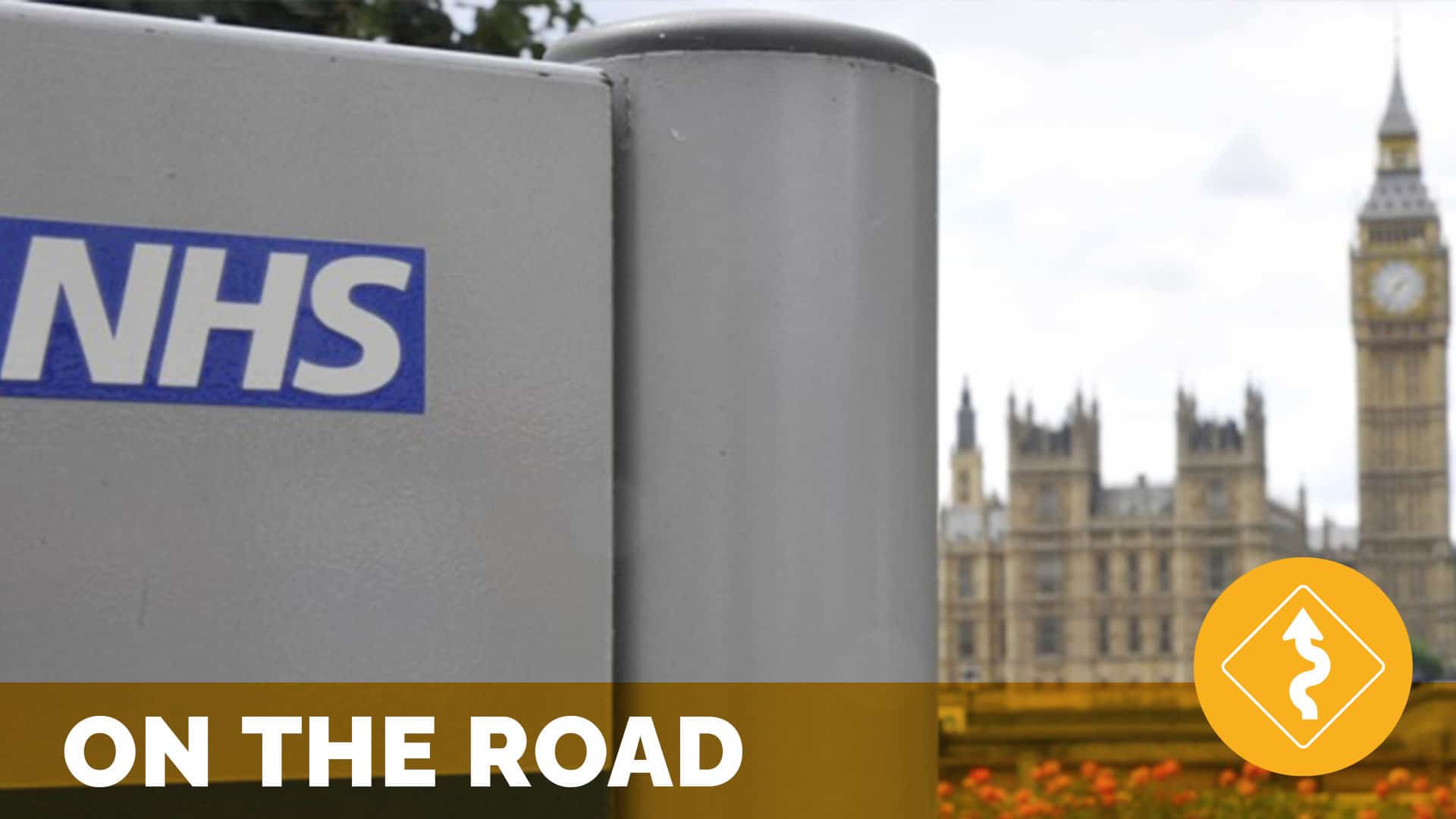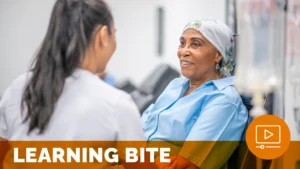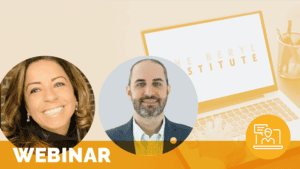Driving a System Experience at the Front Lines of Care

On the Road – Across NHS England – July 2016
by Jason Wolf
In keeping with my international theme this summer our most recent On the Road took me to England for a week of visits and a continuation of what I would deem an historic global year for patient experience overall. From my most recent On the Road in June with Hospital Israelite Albert Einstein and the First Latin American Symposium on Patient Experience to this visit where for the first time Patient Experience had a formal presence as a content stream at one of the United Kingdom’s largest healthcare conferences – Patient Safety Congress, it seems the experience conversation is spreading with significance.
My full week in England was hosted by the NHS Patient Experience team lead by Institute Executive Board member and Director for Patient Experience for NHS England Neil Churchill. I was guided through my busy week masterfully by David McNally, Head of Experience of Care. My week entailed a breadth of meetings and conversations including time with government officials, site visits, conference engagements and educational sessions, wrapping up with a thoughtful debrief with a number of individuals engaged in the NHS England Patient Experience effort including team members and patient and family members. While the limits of this piece will not allow in-depth coverage of all I did, I look to share some key lessons learned and themes that emerged.
Shaping the Conversation
In a week grounded in interactions and perspectives on what was driving excellence in experience across England I was honored to spend time with Neil Churchill, the Chief Nurse Officer for NHS England Jane Cummings and Julia Holding, Head of Patient Experience for NHS Improvement. What Neil, Jane and Julia framed for me in our conversation during the first day of my visit was an intricate system with a broad commitment to the patient experience conversation. While a comprehensive health system, the NHS still operates significantly at the local level, addressing critical issues in the localities of care. What Jane and Neil helped me understand was how the central structures in the system were working to help influence and provide resources for the reinforcement of a commitment to patient experience nationwide.
Of greatest interest to me and I think something we see in any system seeking to address the breadth of its reach – be it one of the largest healthcare systems in the world with the NHS to smaller systems globally – is how to share ideas, drive consistency and achieved desired outcomes. Jane shared one of her most significant lessons, and one with which I wholeheartedly agree, that there is great power found in simplicity. If we can give people the information, ideas and resources to address their local needs and some constructs or frameworks in which to consider action, we have created a solid foundation for success.
A perfect example of this type of resource is the 6 Cs model authored by Jane. The central part of an effort launched in 2012 titled Compassion in Practice and focused on caregiving, it reinforces fundamental points of focus that not only guide action, but can be tied to evidence-based practices and measured outcomes. The 6 Cs are: Care, Compassion, Competence, Communication, Courage and Commitment.
Recognizing the importance of core ideas, complemented by ensuring people have the ability to do what is right where the work is happening is a critical component to the work taking place in the NHS. It is matched by a broad commitment to engage patient and family voice. And while admittedly still a continuing effort, it is a recognized focus and ongoing effort for the organization in ways I have seen many organizations still hoping to achieve.
With this framing in place I had the opportunity to spend time with teams from two of the NHS trusts to hear about their own patient experience journeys. My discussion with Neil and Jane had may have best been summed up in the phrase – Patient experience may be my job, but it’s everybody’s business. This statement reflects a critical perspective that would be valuable for any organization with leadership committed to experience, but requiring all its people to help drive results – meaning ALL organizations in healthcare.
The Power of Focus
My first visit was to Guy’s and St. Thomas’ NHS Foundation Trust (GSTT) and specifically in St. Thomas Hospital. It should be noted that these two merged institutions form one of the oldest healthcare organizations in existence with the founding of St. Thomas’ being in the 1100s. Its historical routes in central London and traversing the history of Europe and the world, place the institution in an interesting place. Yet they too face many of the same challenges so many other healthcare organizations are challenged with globally.
In exploring what was driving the patient experience efforts at GSTT I was honored to spend time with a number of members of the team and specifically our host Karen Bonner, Head of Nursing for Patient Experience. My overview of GSTT focused on core practices I have seen as central to efforts driving patient experience excellence: a focus on measurement and acting on feedback, a commitment to patient and public engagement, a grounding in values and staff development and attention to support services (in this specific case food services as an example).
In the area of measurement and action, GSTT has been intentional in taking both available data as well as collecting additional information it deems central to making the best improvement decisions. To gather patient and community voice GSTT reaches beyond national survey data and one of the newer public surveys, the friends and family test, to a broad range of data points for decision-making. What is powerful about their intent is the breadth to which they look for the information they need. Data and measurement sources include patient advocates and formal complaints and compliments, surveys and comment cards, focus groups and patient support groups, committee membership and mystery shoppers. It also includes direct text messaging of discharged patients as possible. All of these sources are not seen as independent opportunities for action, but rather it is the gathering of all this data and the review of it collectively that helps St. Thomas’ make the best decisions for the organization overall. The key lesson for most organizations is not only how broadly you are collecting information, but how effectively are you aggregating, analyzing and acting on it.
The team at GSTT offered great ideas that emerged as a result of this effort as well, one example, nurse in charge armbands. Based on feedback in a recent national survey, 40% of patients said they could not find some to talk with about their concerns. The team tested a number of options and armbands were chosen as they best met a range of criteria including visibility, cost and comfort.
Following a successful pilot some of the Trust’s wards are now introducing red “nurse in charge” arm bands. These armbands are worn by the nurse in charge during a shift and have helped patients, their families and carers easily identify who they should speak to if they have a question, concern or would like to discuss any aspect of their treatment and care. This is just one example about how acting on data can lead to great experience outcomes. It also reinforces the power of simple actions.
The team at GSTT also acknowledged the need to engage two critical constituencies in their effort, the patients and the public and their very own people. In focusing on a commitment to patient and public engagement, aside from its broad efforts to capture voices of patients and the community for data purposes GSTT has built a clear objective to strengthen engagement of patients and the public. This idea is not simply about occasional listening efforts or advisory structures, but rather it is grounded on the involvement continuum with an ultimate goal of moving from inform, to consult, to involve and ultimately to co-design. This is a fundamental shift many organizations are not yet willing to take on, but will be more and more central to healthcare leadership and change in the near future. This level of engagement is also not just in one functional area or line of focus, but across all efforts. In fact, for the trust it covered assurance, strategy and future planning, service delivery, development and transformation and individual care and treatment. A key lesson is that this bold focus on engagement to its highest level across all the organization may be the most effective path to excellence in engagement and ultimately outcomes. It takes a brave and committed organization to take tis on, GSTT was just that.
In turning to work in supporting and developing its own people, GSTT has been on a decade-long journey to turn its sights to a grounding on values and ongoing development. From resetting the core values of the institution with a wide range of voices in 2006, core value-based behaviors were established and have since been embedded directly into the overall strategy of the organization. In fact, the link of the organizations value to strategy and ultimately outcomes are consistently reinforced, not just via the measurement and engagement focal points I shared above, but in the very strategic actions it takes and the expectations it places on its people with a focus on what it expects. A rigorous framework of behaviors based on level in the organization has been established for both self-assessment and performance evaluations and ultimately developmental opportunities. This extremely clear connection between what GSTT is trying to achieve and the expectations and evaluations it conducts is both extremely rich and fundamentally simple. Yet it is a commitment that many organizations still lack in their drive to address experience excellence. This is a missed opportunity by many and I would suggest taking the chance to learn more about how the GSTT team tackled this effort to tie values, people and performance to outcomes.
Taking all this information and commitment and putting it to action was brought to life in two great cases shared. The first in the efforts to improve mealtime experience and one I saw real time in the units called the Nightingale project. The efforts of foodservice were again framed on the powerful simplicity of efforts that can be taken with the right data, right focus and right commitment. The food service efforts were data driven and consumer-centric leading to investments in new china, process color-coded food trays to help identify patient needs, pictorial menus and many other options. The solution at GSTT was not just implementing room service or the ability to order meals as a customer focused benefit, rather their effort was aimed at changing the service around food, how it was encountered, delivered and experienced. This reframing of the solution has led to strong positive results and feedback across the trust and to what may have been deemed cost prohibitive to some, became an investment in efficiency, savings and better outcomes overall.
As part of my visit to GSTT I also had the chance to spend time walking the facility and specifically visiting Mark Ward and a powerful pilot project underway – the Nightingale project. (It should be noted Florence Nightingale herself has historic ties to St. Thomas’.) While this brief summary of the pilot will not do it justice, this model for caregiving takes the healthcare encounter to a powerfully holistic level. The project includes 1st hour safety briefs in the morning that occur at the patient board and midday huddles to ensure everyone is on the same page. It includes a lights down hour, interdisciplinary rounds and a plan to care for each other as care providers as well. A great example of powerful simplicity in action being piloted is the practice that everyone leaves together – meaning a shift leaves together, no one is left with a pile of work while others sneak out. These ideas are already being put in practice and are already reaping great benefits in quality, safety and service as well as staff well-being. All critical elements central to overall experience.
To Karen Bonner and her team, great thanks for the thoughtful overview of what I know could have been a much longer visit. As I left the site for my next stop of the week we walked by an incredible new sculpture that adorns the St. Thomas’ campus, the Mary Seacole Memorial Statue. Unveiled just days before my visit, the statue represents both the rich diversity of the Institution and the powerful role compassionate care brings to all we do in healthcare. Mary Seacole was a Jamaican-born nurse who served England during the Crimean War. Her commitment and self-sacrifice undergirds so much of what the essence of healthcare is about. Her presence now on the campus of St. Thomas’s truly reminds us of that and so much more. It was an honor to experience her presence and I encourage you to read more.
A Critical Commitment to Change
My second site visit was to Frimley Health Foundation Trust and specifically Wexham Park, a facility that just two years ago was rated inadequate by the Quality Care Commission (CQC) and had a local reputation of being a facility many tried to avoid due to level of care and morale of the staff itself. Frimley exemplifies both the means and the speed with which an organization can reset and change with the right people, commitment and focus. From an at-risk facility in 2014 to one that in less than 2 years had scores showing 97% of patients would recommend the facility to others was a significant turnaround. While this transformation is a much bigger story itself, there are some common ideas that emerge from their journey I look to highlight.
First, the change was grounded in a reset of culture shaped by reframing and re-instilling a set of core values in the organization. To a person every individual with whom I talked from Claire Marshall, Head of Patient Experience to Sir Andrew Morris, CEO stressed that this transformation was about process or place, but was grounded in people first. It was driven by framing core values, realigning people to those values, developing leadership at all levels and getting the culture right overall. From an organization that in every instance I heard morale was at an all-time low, I would never have guessed by the positive interactions, smiles and engagement I had from every member of the Wexham Park team.
From that grounding of cultural transformation the clinical efforts began to realign themselves as well and an intense effort at focusing on experience ensue. From efforts to expand data collection and make the ability to provide feedback and complaints more accessible, to extensive development forums, to simple but high impact pieces for patient communication – wonderfully exemplified in table mats Across including who was wearing what uniform, the patient experience efforts were clear, purposeful and actionable. Each of these efforts and more added to a comprehensive and rapid transformation of the facility. And the data continue to show improvement. In fact, one patient whom after an experience in the Wexham Park emergency department refused to ever return now is an active advocate for all the organization has become.
This story exemplifies and reinforces all that is central to the definition of patient experience itself. That experience is grounded in the culture of an organization and is conveyed through the interactions that occur. In shifting these two levers and in doing so quickly, Wexham park saw a rapid and significant change and an opportunity to be a leader in experience excellence for many years to come.
As Andrew Morris, CEO, shared, “As healthcare is a massive people business, we have to get the culture right first. Our staff wanted to prove they could make a difference and we helped them do just that.” He continued, “If there is the willingness and ownership that people can do better, it doesn’t take that much to get to outstanding.” He added the biggest mistake many make is a focus on the numbers first, which he suggested can often be a driver of mediocrity. “The achievement of excellence comes from a focus on culture, values and behavior, if you get that right the results will follow.”
A New Conversation
While my intent for this On the Road was to highlight these two great examples of all it takes to drive experience excellence I would be remiss not to mention the learning opportunities I had as well. First, as noted above was an historic gathering of some key thinkers on patient experience that gathered at the Patient Safety Congress to offer the first Patient Experience Stream. From powerful case studies of improvement to moving patient stories, an overview of patient experience and what drives us that I had the honor to co present with Patient Experience Network founder Ruth Evans, to the means by which we can and should engage all – patients, our communities and our people in our experience efforts, what was perhaps as important as the information shared, was the statement that patient experience as a fundamental and central conversation to healthcare is here to stay. In concluding the conference, I had the honor to join a plenary panel with the stream co-chairs Neil Churchill and Christine Morgan, a powerful patient voice, as we challenged the traditional healthcare crowd that it was time to think differently and act more intentionally with a broader focus on experience. It was an important push on historic thinking as our movement continues to flourish.
I also had the chance to spend the afternoon with one of my Patient Experience idols, Jocelyn Cornwell, formerly of the Kings Fund, now leading a sister organization in the UK, The Point of Care Foundation. Taking an afternoon to see the practice of experience-based co design reviewed both in theory and practice brought my visit full circle to the very engagement strategies outlined by GSTT as my visit began. We must engage all voices in how we create healthcare, strategize and operate, not simply to reflect on our actions, but to help frame them from the start. This is one of the greatest opportunities that remains for us in patient experience and healthcare overall.
Where We Go from Here
After an incredibly rich and full five days, I had the chance to debrief with members of the NHS England Patient Experience team, leaders from Picker Institute Europe (thanks to CEO Dr. Andrew McCulloch for joining), NHS Improvement and a number of patient and family voices, including David Festenstein from our own GPFAC, in reviewing the week and exploring opportunities for the future. My takeaways from the week, about the power of leadership, people and culture, were not surprising themes, but rather reinforced the central ideas to our expanding conversation. In beginning to think about where we go from here, not just in expanding excellence in practice, but stretching the edges of our movement, this journey opened up even greater possibilities that I think will support every one of us tackling patient experience in organizations of all sizes at all stops on the continuum of care.
First, we must be willing to break down and build bridges across traditional healthcare tribal boundaries. If we believe patient experience is an integrative idea from the perspectives of those we care for and serve, then it behooves us to reach out, build relationships and look to blur the edges a bit in the interest of greater outcomes overall. Second we must continue to expand the conversation on value, specially of patient experience in healthcare. Both the cases from GSTT and Frimley exemplified the ideas essential to experience excellence are drivers for greater outcomes overall and we should use those data points to reinforce and expand the conversation on value in healthcare in general. (To this point, I invite and strongly encourage you to participate in the current exploration on the value seen in a focus on patient experience. You can find the study here.) We also have an opportunity to think about language and voice. How can we continue to change the healthcare conversation and simplify the language as Jane Cummings so aptly challenged me to start the week? How do we continue to find means to engage, involve and act on patient voice? This was occurring at every stop on my journey and while a clear and obvious part of our work, there is a recognition that there is much more that can and should be done.
All of this brings me back to the powerful driver of this visit in the first place, that we together are building a global community on experience excellence and therefore must be willing to learn, share, ask and explore. It is in our commitment to “share wildly and steal willingly” that we have the greatest opportunity for individual and community success. This visit reinforced that very idea, the idea at the roots of our On the Road series itself, and one that must remain central to our work. This is what will drive us forward together with speed, intention, purpose and strength for many years to come.
Special thanks to Neil Churchill and the entire NHS England Patient Experience Team for their planning and support, to my site hosts and everyone else who filled my week with thoughtfulness, care and learning. Special thanks as well to David McNally who was my unwavering guide through a patent experience marathon. Each and every one of you are the patient experience!
Related content
-
 Staff & Provider Engagement
Staff & Provider EngagementFostering a Growth Mindset in Healthcare: A Strengths-Based Approach to Improving Patient Experience
This learning bite explores a pilot program that took a compassionate, strengths-based approach to improving provider communication and engagement. By focusing on relationship-centered training—rather than remediation—the program led to significant improvements in patient experience and provider well-being, offering a scalable model for fostering a growth mindset in healthcare.
Learn more -
 Culture & Leadership | Patient Family & Community Engagement
Culture & Leadership | Patient Family & Community EngagementNational Human Experience Movement Led by SOBREXP in Brazil
Global Headliner Webinar Series (Complimentary) – Join this webinar to discover the inspiring journey of Brazil’s National Movement in Human Experience, led by SOBREXP, the Brazilian Society of Patient Experience and Person Centered Care. Learn about the timeline, strategies, challenges, and key achievements that have shaped this groundbreaking effort to elevate the human experience. Tuesday,
Learn more -
 Staff & Provider Engagement
Staff & Provider EngagementBeyond the White Coat: Mental Health in the Life of a Junior Doctor
This article underscores the profound need for a culture that prioritises mental health, especially among doctors navigating their early careers. This personal narrative also highlights the importance of overcoming this and the challenges one can face while trying to do so. A journey of a 30-year-old doctor, as she hurdled along life with the passing
Learn more
